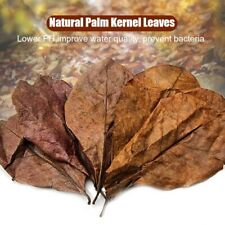Why You Should Recycle Your Dog’s Waste

About 5% of waste in landfills is dog fecal material, which makes for a mighty big carbon footprint for our canine best friends. Dog waste contains pathogens and parasites that can hurt water quality, and since rainwater washes waste into storm drains, then rivers and streams, waste left on open ground harms the environment.
As a result, responsible dog owners and municipalities are addressing the disposal of this waste in various ways. For example, a pilot partnership between dog owners and a compost company in Ithaca, N.Y., is undertaking large-scale composting of waste collected at the city’s dog park. Innovative commercial services in Oregon and Colorado also collect dog poop and recycle it.
What You Can Do About Dog Waste
With care and effort, you can dispose of your dog’s waste in an environmentally safe way. Since dog poop can contain such bacteria as E. coli and salmonella, it’s important to handle it safely. You don’t want it contaminating groundwater tables, for instance, and it wouldn’t make appropriate compost for a vegetable garden. In fact, it’s best to dig composted matter into soil around ornamental plants, says Sharon Slack, head gardener at Vancouver’s compost demonstration garden in British Columbia.
Consider these green disposal methods:
1. Commercial In-Ground Dog Waste Toilet
For $89.95, you can purchase an in-ground Doggie Dooley kit, which includes a galvanized steel tank with a polymer lid, a supply of digester powder containing bacteria that speed decomposition, a long-handled scooper and an odor-eliminating solution. You bury the tank to the height of the lid, then simply dispose of poop in the tank. The Dooley requires a modest amount of maintenance: All you need to do is add water and the digester. "Typically, there’s no odor, because there’s a lid, and it’s at ground level," explains Carey Stiles, president of the product’s manufacturer, Hueter Toledo Inc.
The company makes several models, the largest of which accommodates two large – or four small – dogs. "You don’t have to clean the system out," says Stiles: The waste breaks down into the soil around or below the tank, depending on the model. But do "test your soil first for good drainage," since in-ground composters won’t work if you have either hard clay soil or porous sandy soil, adds Stiles.
2. DIY In-Ground Composter
For a low-cost option, cut a hole in the bottom of a plastic garbage can, dig a hole in the ground, line the bottom of the pit with rocks for drainage, then insert the can. You’ll want the can lid to rest at ground level, says Slack. You’ll also need to use some sort of natural septic starter or bacteria culture and water to aid the composting process. You can sprinkle soil on top of each deposit you make or add brown leaves or green yard waste to speed the process.
"If you are really good about putting your bacteria culture in and you have good draining soil, you could probably go a long time," says Slack.
3. Above-Ground Electric Composter
NatureMill Inc., a San Francisco-based manufacturer, sells electric-powered composters that you simply plug into an outdoor outlet, says NatureMill’s Carrie Donovan. Models range from $299 to $399. The composter heats 24 hours a day and mixes matter every four hours, producing compost in as little as two weeks. An air pump helps alleviate odors.
You’ll likely find using a green disposal system for your pooch’s poop more pleasant than always tossing plastic bags in the trash. As Stiles says, "It’s a nice, neat, safe, clean way to dispose of your pet’s waste."













